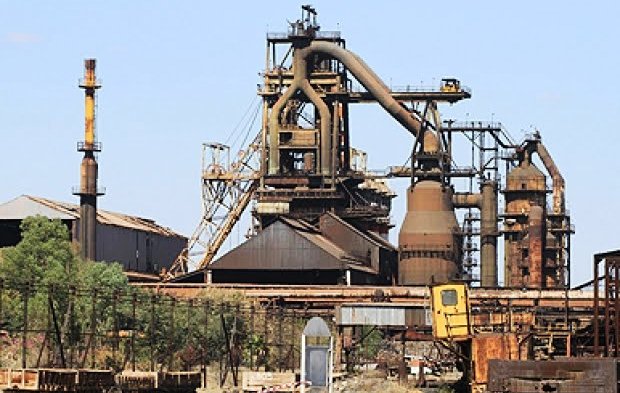After about 50 years, the country is yet to establish a stable iron and steel sector despite the huge investment of over $ 7 billion already expended on steel development, a document from the Raw Material Research Development Council has shown.
Nigeria imported $1.18 billion worth of steel materials in 2020 according to the United Nations COMTRADE database on international trade.
From the statistics available from the National Bureau of Statistics, Nigeria imported iron, steel and metals, valued at N837.76 billion in the 3rd and 4th quarters of 2021. According to the statistics, the country imported basic metals, iron and steel products with 600mm in width, rolled, painted and coated, varnished and coated with plastics within the six months period. The total value of basic metals imported within the two quarters was N748.529 billion while that of iron and steel was N88.232 billion.
Nigeria is blessed with all the major raw materials needed for the production of iron and steel. These, according to the document, include three billion metric tons of iron ore, three billion metric tons of coal, more than 700 million metric tons of limestone and 187 billion SCF of natural gas.
Yet, the country is still far behind the major producers in the world.
The document also reveal that among the top 10 highest producing countries as at February 2022 were China, 7.5 million Mt, India; 10.1 million Mt; Japan, 7.3 million Mt; United States, 6.4 million Mt; Russia, 5.8 million Mt; South Korea produced 5.2 million Mt; Germany, 3.2 million Mt; Brazil, 2.7 million Mt and Iran, 2.5 million Mt.
With the opening up of global trade after the COVID-19 disruptions, Africa, as at February 2022 has produced 1.3 million metric tons, mostly by Egypt, South Africa and Libya with Nigeria not nearing the list.
Nigeria’s efforts to develop the sector
According to the document from the Raw Material Research and Development Council, the planning for the Nigerian steel sector started in 1958. However, after about 50 years, the country is yet to establish a stable iron and steel sector despite spending over $7 billion on steel development.
The exploration started at the Itakpe iron ore deposits in 1963. Between 1961 and 1965, several foreign companies that came to assess the Nigerian steel sector reported that steel production was not feasible as a result of lack of domestic market, high cost of the technology, infrastructural development, lack of manpower, the poor grade of iron ore deposits in Nigeria and other international political considerations. However, in 1967, Russian experts came to Nigeria to conduct feasibility studies towards the establishment of an iron and steel plant in Nigeria. During the period; 1960 – 1970, the federal government directly coordinated the iron and steel sector in Nigeria and there were instances of policy inconsistency. During the Second National Development Plan (1970–1974), the government established the National Steel Development Authority (NSDA) that was saddled with the responsibility of iron and steel development in Nigeria. Under the coordination of the Russian experts, NSDA conducted various geological surveys that led to the discovery of commercial quantities of iron ore in Nigeria and during the implementation of the third National Development Plan (1975 – 1980), the government signed various agreements for the construction of two integrated steel plants and three rolling mills. In 1979, the government promulgated Decree No. 60 of 18th September 1979, which unbundled NSDA and established the Ajaokuta Steel Company, Delta Steel Company, Jos Steel Rolling Company, Katsina Steel Rolling Company, Oshogbo Steel Rolling Company, National Iron Ore Mining Company, National Steel Raw Materials Exploration Agency, National Metallurgical Development Centre, and the Metallurgical Training Institute. While the three rolling mills and DSC were completed on schedule, the ASC was not completed after over 40 years of intermittent construction work.
Up till today, the Ajaokuta Steel Company (ASC) has failed to take off while Delta Steel Company (DSC) and the rolling mills in Osogbo, Jos and Katsina are producing at very low capacity utilisation.
These developments have led to fluctuations in the Production Value Added and Capacity Utilisation in the Base Metal, Iron and Steel Sector of the economy.
According to the statistics available from the Annual Reports of the Manufacturers Association of Nigeria from 2016 to 2020, the Production Manufacturing Value (PMV) in the base metal, iron and steel and fabricate metal products sectoral group was N240.623 billion in 2016, N408.347 billion in 2017 and N503.9 billion in 2018. The corresponding values for 2019 and 2020 were 483.424 billion and 324.480 billion naira respectively.
What must be done
One of the major complaints militating against the development of this sector is the quality of the local raw materials.
The Director-General of the RMRDC, Professor Ibrahim Hussaini Doko, said there is a need to harness the efforts made locally on the development of local raw materials as pockets of breakthroughs have been recorded in the sector.
He said one notable achievement worthy of mention was that in 1994/95, Nigerian scientists, engineers and technologists teamed up to develop a process of upgrading the Itakpe Iron Ore to the super concentrate (65/67%) grade required for a finish without the addition of foreign inputs. This development led to the production of the first all Nigeria steel, the iron ore of which hitherto had to be imported at colossal foreign exchange. This effort was discontinued as the iron and steel sector was not properly funded. For more breakthroughs to be recorded locally in the sector, he said, the council is promoting synergy among the government, industry, academia and the private sector.
‘’Along this line, human capacity building, research and development in the metallurgical industry, particularly iron and steel, should be given the serious attention it deserves by the federal government,’’ he said.
Mr Toyi Ajayi, a metallic and steel engineer, reminded the federal government that the consequences of the sub-optimal operation in the steel sector are many.
Ajayi said apart from foreign exchange drain, if the phase 1 of the Ajaokuta Steel had been completed and completely installed and operational, the multiplier effect would have been enormous including direct employment of over 10,000 workers at the plant, 20,000 in the raw materials industries and 30,000 workers in downstream industries utilising iron and steel products.
‘’If the sector is functioning adequately, it will also contribute not less than 30 per cent of the inputs required in the automotive industry in Nigeria,’’ he said.

 Join Daily Trust WhatsApp Community For Quick Access To News and Happenings Around You.
Join Daily Trust WhatsApp Community For Quick Access To News and Happenings Around You.


